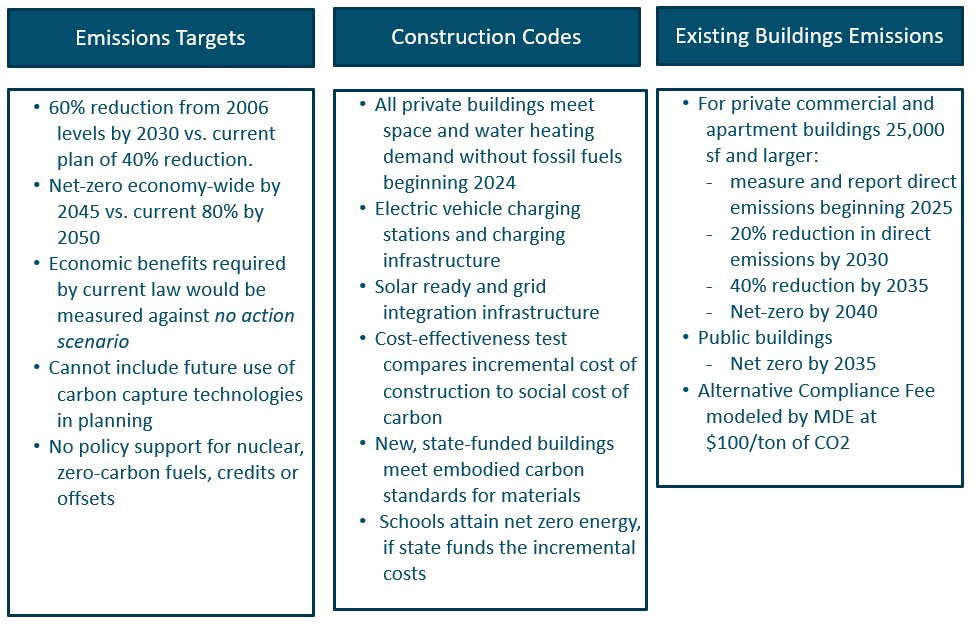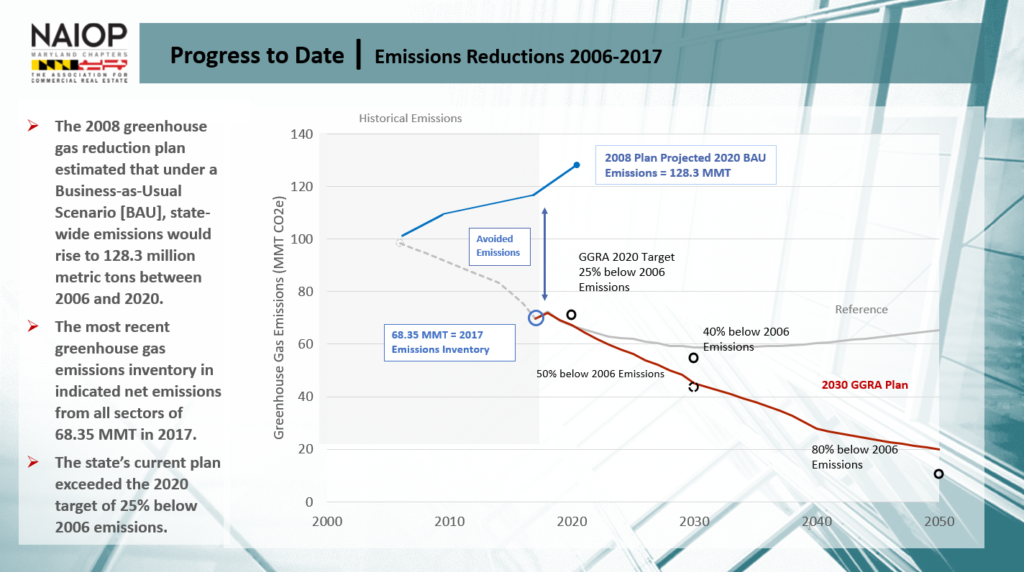Legislation At A Glance
The Maryland General Assembly is considering nearly a dozen climate related bills that affect commercial construction and existing buildings.
The House and Senate have introduced slightly different proposals that mandate an all-electric building code for new construction and a building emissions standard for existing buildings. The measures are intended to put the building sector on a path to reach net zero emissions by 2040 – five years ahead of an economy-wide net zero deadline of 2045.
By 2024, all new buildings would be required to meet space heating and hot water demands without the use of fossil fuels. Additional requirements for new construction include provisions for buildings to be made ready to support electric vehicle charging, solar power generation and better integration into the electric grid.

Beginning in 2025, existing commercial and apartment buildings of 25,000 square feet or more would be required to measure and report the direct carbon emissions that result from fossil fueled heat and hot water systems. Those buildings would be required to reduce direct emissions 20% by 2030, 40% by 2035 and achieve net-zero by 2040. Hard-to-mitigate buildings would be able to choose an alternative compliance fee based on the social cost of carbon. The Maryland Department of Environment modeled the fee at $100 per ton of emissions.
A Maryland Climate Commission recommendation that incentives and tax credit programs be scaled up to provide a three- to seven-year return on investment for carbon emissions reduction practices was not carried over to the bills. Existing utility-run conservation programs would be redirected to align more with the requirements of the bill. New funding sources and appropriate incentives would be studied between now and December 2023.

Maryland has surpassed its plan to cut greenhouse gas emissions by 2020. Analysis by the Maryland Department of Environment, however, suggests the state needs to accelerate its emissions-reduction schedule.